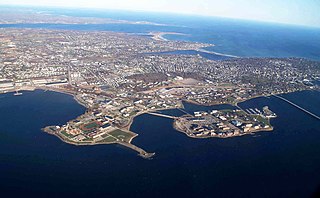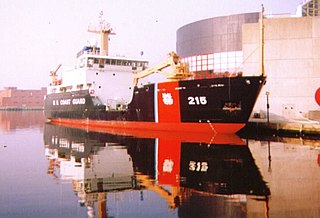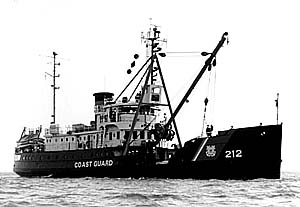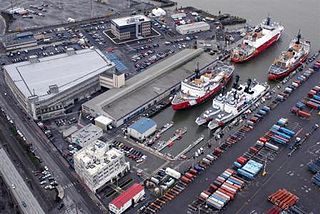The following January 2019 order of battle is for the United States Coast Guard.
In modern use, the order of battle of an armed force participating in a military operation or campaign shows the hierarchical organization, command structure, strength, disposition of personnel, and equipment of units and formations of the armed force. Various abbreviations are in use, including OOB, O/B, or OB, while ORBAT remains the most common in the United Kingdom. An order of battle should be distinguished from a table of organisation, which is the intended composition of a given unit or formation according to the military doctrine of its armed force. As combat operations develop during a campaign, orders of battle may be revised and altered in response to the military needs and challenges. Also the known details of an order of battle may change during the course of executing the commanders' after action reports and/or other accounting methods as combat assessment is conducted.

The United States Coast Guard (USCG) is the coastal defense and maritime law enforcement branch of the United States Armed Forces and one of the country's seven uniformed services. The Coast Guard is a maritime, military, multi-mission service unique among the U.S. military branches for having a maritime law enforcement mission and a federal regulatory agency mission as part of its mission set. It operates under the U.S. Department of Homeland Security during peacetime, and can be transferred to the U.S. Department of the Navy by the U.S. President at any time, or by the U.S. Congress during times of war. This has happened twice: in 1917, during World War I, and in 1941, during World War II.
Contents
- Headquarters Support Units
- Deputy Commandant for Operations
- Deputy Commandant for Mission Support
- Headquarters direct report units
- Atlantic Area
- First District
- Fifth District
- Seventh District
- Eighth District
- Ninth District
- Atlantic Area Controlled Units and Cutters
- Pacific Area
- Eleventh District
- Thirteenth District
- Fourteenth District
- Seventeenth District
- Pacific Area Controlled Units and Cutters
- References


The headquarters of the Coast Guard is located at 2703 Martin Luther King Jr Avenue SE in Washington, D.C.. The Coast Guard relocated to the grounds of the former St. Elizabeths Hospital [1] in 2013.

Washington, D.C., formally the District of Columbia and commonly referred to as Washington or D.C., is the capital of the United States. Founded after the American Revolution as the seat of government of the newly independent country, Washington was named after George Washington, the first president of the United States and a Founding Father. As the seat of the United States federal government and several international organizations, Washington is an important world political capital. The city, located on the Potomac River bordering Maryland and Virginia, is one of the most visited cities in the world, with more than 20 million tourists annually.

St. Elizabeths Hospital is a psychiatric hospital in Southeast, Washington, D.C. It opened in 1855 as the first federally operated psychiatric hospital in the United States. Housing over 8,000 patients at its peak in the 1950s, the hospital had a fully functioning medical-surgical unit, a school of nursing, accredited internships and psychiatric residencies. Its campus was designated a National Historic Landmark in 1990.
The Coast Guard is divided into two area commands, the Atlantic Area and the Pacific Area, each of which is commanded by a vice admiral, with each being designated Maritime Homeland Defense Areas. Each includes various district commands. [2]
The Coast Guard is further organized into nine districts, commanded by a District Commander, a rear admiral, with each responsible for a portion of the nation's coastline. [3]
There are three major operational commands located outside the United States:
- USCG Far East Activities (FEACT) is located at Yokota Air Base, Japan. FEACT also commands Port Security Unit’s which deploy to South Korea, helping to support U.S. Naval Forces Korea. FEACT helps inspects U.S. ships overseas and foreign ships that will be operating in the Pacific. FEACT helps by providing Maritime Safety, Security, Training and International Support. [4]
- USCG Activities Europe (ACTEUR) is located in Schinnen, The Netherlands. [5]
- Patrol Forces Southwest Asia (PATFORSWA) is based out of Manama, Bahrain. Established in 2002, the mission of PATFORSWA is to train, organize, equip, support and deploy combat-ready Coast Guard forces in support of CENTCOM and national security objectives. [6]

Yokota Air Base, is a United States Air Force (USAF) and Japan Air Self-Defense Force (JASDF) base in the city of Fussa, a city in the Tama Area, or Western Tokyo.

Japan is an island country in East Asia. Located in the Pacific Ocean, it lies off the eastern coast of the Asian continent and stretches from the Sea of Okhotsk in the north to the East China Sea and the Philippine Sea in the south.
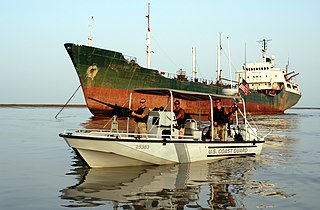
United States Coast Guard Port Security Units are deployable units organized for sustained force protection operations. They can deploy within 96 hours and establish operations within 24 hours. PSUs conduct OCONUS port security in support of requesting regional Combatant commander. They provide waterside protection to key assets at the termination/origination point of the Sea Lines of Communications (SLOCs). PSUs may operate in U.S. territorial waters under the direction of a Coast Guard or Maritime Defense Zone (MDZ) command or in foreign waters as part of Maritime Expeditionary Security Forces (MESFs) within the Navy Expeditionary Combat Command structure.
Various shore establishment commands exist to support and facilitate the mission of the sea and air assets and report directly to the U.S. Coast Guard Headquarters is located in Southeast Washington, DC.
